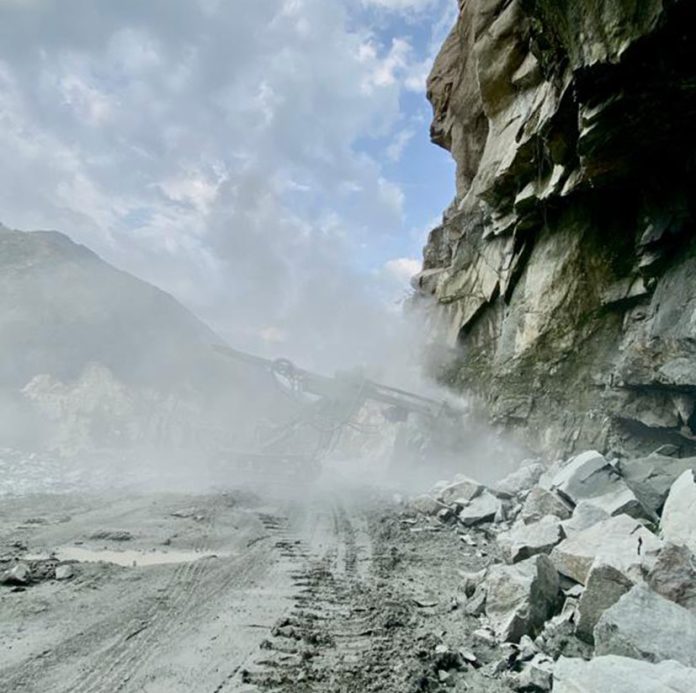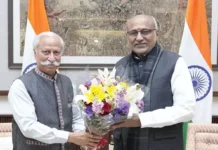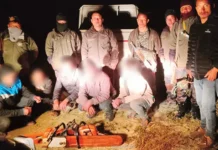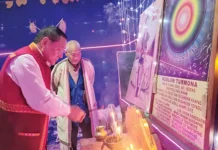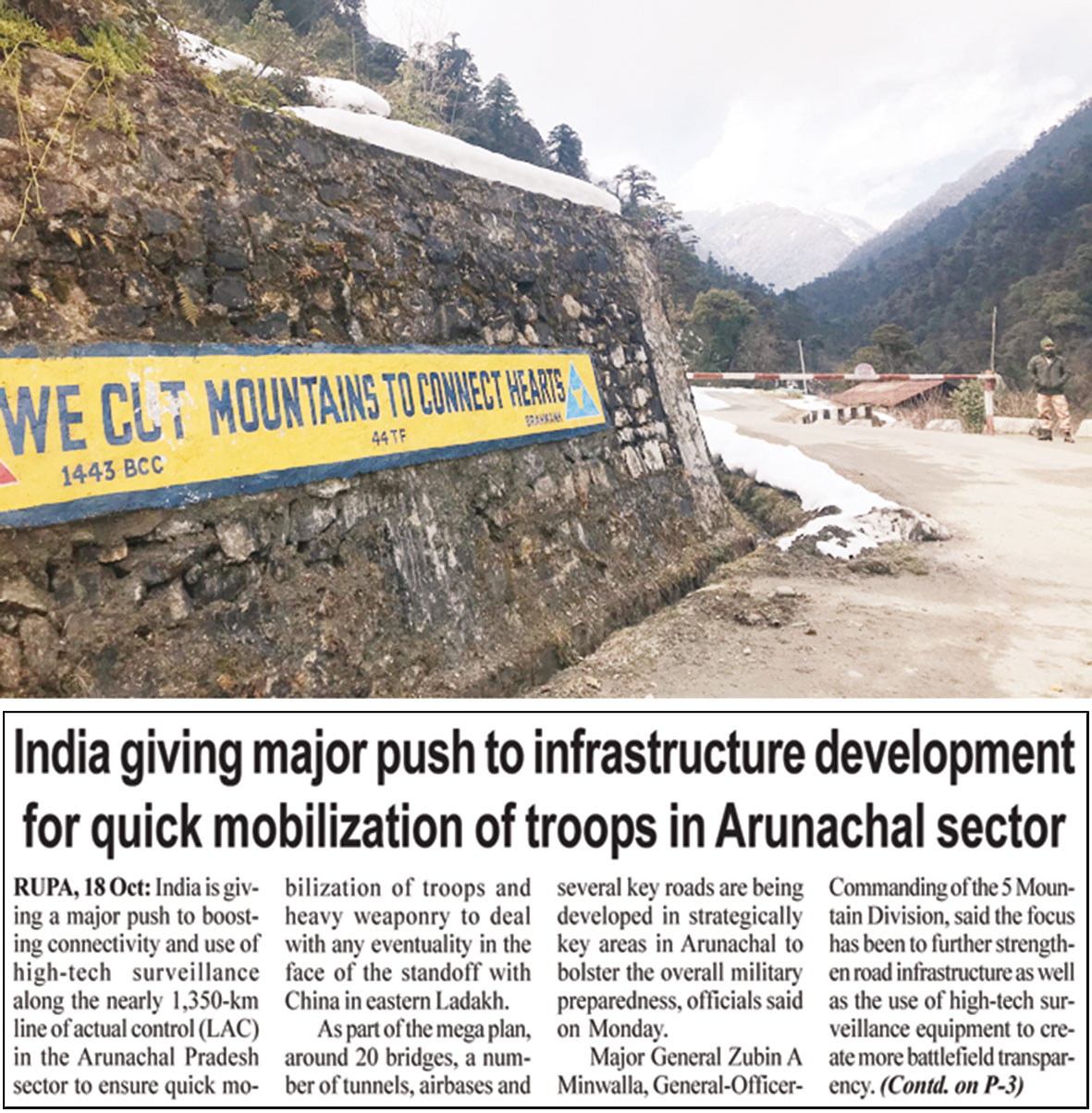
[ Tongam Rina ]
It’s rare for common Arunachalees to reach the last Indo-Tibetan border posts unless invited by the Indian Army during formal occasions like peacetime border meetings with China. Permissions are extremely difficult to get and most of the time you don’t know who to ask because civilian and army authorities take an inordinate amount of time to decide who is the actual boss.
As an Arunachalee, brought up on a heavy dose of Indian nationalism and national security, who am I to question the army for making me feel like a lesser citizen in my own state? That feeling of being a lesser Indian citizen happens a lot more when you are nearer the line of actual control, which is not definite.
Sometimes, the unexpected does occur. In February of 2020, while on a holiday in the border town of Mechukha in Shi-Yomi district, I got an invite to visit Lamang, the last border post on the un-demarcated Indo-Tibet border.
It was a rare opportunity that I was getting to visit the last Indian border post without having to worry about paper works, or having to explain to the Indian intelligence the purpose of my visit, or having to give an undertaking that I would not take pictures or write about anything that I saw and did not see.
There was no requirement of permission from the army or civilian authorities this time because a group of ministers from Arunachal were visiting the area. Lamang is some 29 kilometres from Mechukha, but it took some time to even reach the second last post.
Arunachalees know that before embarking on any journey in the state, it’s a good idea to ask about the time that’s likely to take than the distance. Twenty-nine kilometres could be anywhere between 45 minutes to three hours by road, if you are lucky. Absolutely anything could be the reason for the delays of hours in reaching the destination – weather, roads made of pebbles, finding remains of roads in potholes, crossing the same stream ten times because there are no bridges, and making way for the army convoys.
Weather was what stood between Lamang and us.
We could not make it to the last border post as heavy snowfall had blocked the way after crossing Yorlung, some 20 kilometres from Mechukha.
Disappointed, at the block point, we stopped for photographs, precariously balancing to avoid tripping on the slippery snow-filled road, before returning to Yorlung, the second last Indian post.
After a short stop at Yorlung, we made our way back to Mechukha.
There is a village close to the second post, but civilians are not allowed to go beyond Yorlung.
That’s the case everywhere in the border areas. Civilians can’t gain access beyond certain points under the Indian Army. While the Indian Army makes it impossible to go beyond a certain area for civilians, the Indian government refuses to provide basic facilities to border villages, leading to voluntary depopulation.
On the other side, populating the border areas has been the policy of the Chinese government. Even from a distance, the stark difference in infrastructural facilities can be seen.
Migration from border villages to urban areas in Arunachal is not uncommon, because of lack of facilities and livelihood options. Schools are defunct in many border villages; there are no health facilities to speak of, and roads are nonexistent.
The issue has been taken up in the legislative assembly a number of times, the latest being in August 2021.
Chief Minister Pema Khandu attributed the migration from border villages to “lack of infrastructure, basic amenities and employment opportunities, difficult terrain” and decrease in fund allocation under the Border Area Development Programme (BADP), a union government initiative in all border states of the country.
Last month, the Indo-China Border Development Legislators’ Forum of Arunachal Pradesh, consisting of elected representatives of the border districts along the three international borders, had sought “modification of the existing BADP guidelines, fund enhancement and submission of block-wise utilization certification instead of the existing collective one.”
The forum was formed in September 2021 to address the developmental needs of the people living in the border areas and to check the migration of people from the border villages to urban areas, according to a press statement.
“The people living along the international borders are still devoid of basic amenities, owing to which they migrate to urban areas in search of better life,” the statement from Legislative Assembly Speaker Pasang D Sona read.
Earlier, in March 2021, Deputy Chief Minister Chowna Mein in his budget speech had announced creation of three model villages along the Indo-Tibet border areas with an allocation of Rs 30 crores.
The government has not made clear how it intends to do it and where exactly it wants to establish these villages in the border areas in the eastern, western and central parts of the state.
According to a government document, Arunachal shares a 1,080-km-long international boundary with China of the total 1,680 kms of international borders that include those alongside Myanmar and Bhutan.
Tawang and West Kameng share borders with Bhutan as well as Tibet, while Anjaw shares border with Tibet as well as Myanmar. East Kameng, Kurung Kumey, Kra Daadi, Upper Subansiri, Shi-Yomi, Siang, Upper Siang, Lower Dibang Valley and Dibang Valley share borders with Tibet.
The government of India funds the BADP, which specifically focuses on the border blocks along the three international borders, but little has been achieved on the ground, leading to migration to nearby towns with better facilities.
While migration to urban parts of Arunachal is not new, a growing number of the urban poor, specifically in Itanagar, belong to border blocks.
The government is perhaps well aware of it and sometimes even makes lofty speeches in the legislative assembly, but Arunachal has done little to encourage people to stay in their villages.
The lack of facilities in the border areas and the resultant migration is rarely part of the discourse of the hyperventilating Indian media, or the focus of the union government.
Whenever there is a border issue between China and India along the Indo-Tibetan border in Arunachal, or elsewhere, there usually are claims and counterclaims by both governments, which is hyped up by the media that very soon move on till the next intrusion happens or China props up yet another border village overnight. People living in the border villages are forgotten, even when national security issues are discussed.
In Arunachal, there usually is a muted response or an occasional retort to building of border villages by the neighbouring country, or even to intrusions. This is perhaps because it’s a common occurrence, or perhaps it’s a neighbourly thing to ignore each other’s transgressions, or perhaps because we know that we don’t have access to our own land, the hunting and grazing grounds near the borders, in the name of national security.
Is it because there is no trust in Arunachalees that their own land has been kept away from them in the last posts of the borders? It may be mere speculation of a lazy reporter, but the fact remains that the border areas under the control of the Indian Army are out of bounds even to the border people, unless one is a hunter or someone employed by the Indian Army for various roles.
The government of India needs to change its policy. Obviously, building new border villages does not really make sense in an ecologically sensitive region, but ensuring access to education, health facilities and other infrastructure without destroying the environment is the duty of the government. If not for the border people, then in the name of national security, India needs to give facilities to Arunachalees who are living along the borders, and also give them access to their own land.
More than anyone, the border people wish for peace. I am sure that the people on the other side of the border feel the same way. No one wants to live in perpetual uncertainty.
While I wish for reopening of the traditional border trade routes with Tibet, which is much nearer than any mainland Indian trading point for the people along the Indo-Tibetan border, I also realize that fear is real, after what happened in Doklam and Ladakh.
Stapled visa? Well, that’s for another time and space.

